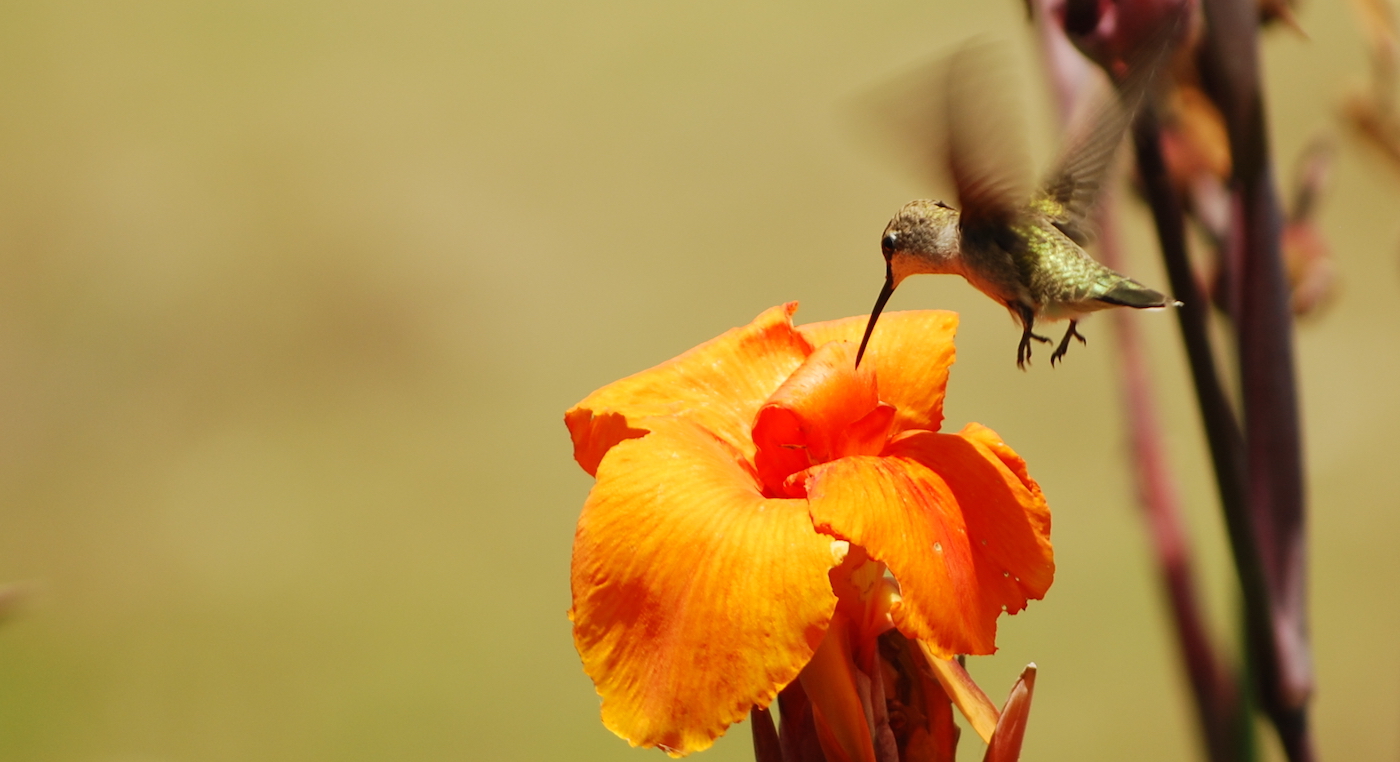On a warm spring afternoon there’s nothing nicer than relaxing on the front step listening to the bees buzz and the birds sing. It’s especially nice to know that while I’m relaxing, someone else is working in my garden. Fat, furry, black-and-golden bumblebees are flying from flower to flower pollinating as they go. Our native pollinators—the orchard mason bees, bumblebees, and syrphid flies—are out and about ensuring bountiful crops for our gardens and orchards.

In the natural world, pollination is a very big deal. As insects collect pollen and nectar to feed on, they play a key role in moving that pollen from plant to plant.
Bees seeking nectar do important work as they brush up against flowers, picking up pollen from one blossom, then carrying it to another. In this way they set in motion the all-important process of pollination, which ultimately produces food in great quantities. The work they do to fertilize results in the growth of fruits, vegetables, grains, avocados, onions, melons, berries, and lots more. In February 2014, there were insufficient honeybees for all the almond orchards blossoming in California, which resulted in crops far smaller than hoped for. Without insects, most of us mammals would be pretty hungry.

Bees are responsible for 30 percent of the food U.S. consumers eat. Albert Einstein once said: “If the bee disappeared off the face of the earth, man would have only four years of life left. No more bees, no more pollination, no more plants, no more animals, no more man.” The flowers you love to grow for their color, their scent, and their structure in the garden, were actually designed by Mother Nature to attract pollinators. Gardens with winter and early spring bloomers will see more flying insects. Blossom shape, size, and color each play a role in attracting just the right winged visitor. Pat Kasa, master gardener in Kitsap, Washington, notes that some flowers actually have a bull’s-eye or landing ramp in the flower’s center, in the form of a stigma that the pollinator aims for. Moths and bats flying at night can easily locate a white flower. Hummingbirds have no sense of smell, but are drawn to tubular or trumpet-shaped flowers like honeysuckle or columbine, perfect for their long beaks. Flowers with a heavy scent guide pollinators to just the right spot.

How can we encourage pollinators to visit our garden? Plan your plantings so that something is flowering from early spring all the way through the end of summer. Plan to leave some undisturbed areas, habitat for nesting sites in your garden. Promote beneficial insects that instinctively prey on pests present. Most importantly, limit the use of insecticides, with their risks to bees, especially dusts and powders. A bee’s furry body transports powders back to the nest, possibly killing entire colonies. Honeybees have been under attack these days not only from pesticides but also parasitic mites. Fortunately, native mason bees are not vulnerable to these parasites. They are taking over the work that the imported honeybees have been doing for many years. If you want to attract mason bees, local nurseries and bird shops carry homes for them—blocks of wood with nesting holes drilled into them. For butterflies and bees, salt, minerals, nectar, and moisture are necessities. Set out shallow saucers filled with soil in a sunny area out of the wind. Keep the dirt in the saucers moist and top with a light sprinkling of salt. Watch them come to feed. Bumblebees may also nest in an inverted terra cotta flowerpot set on a flat rock.


